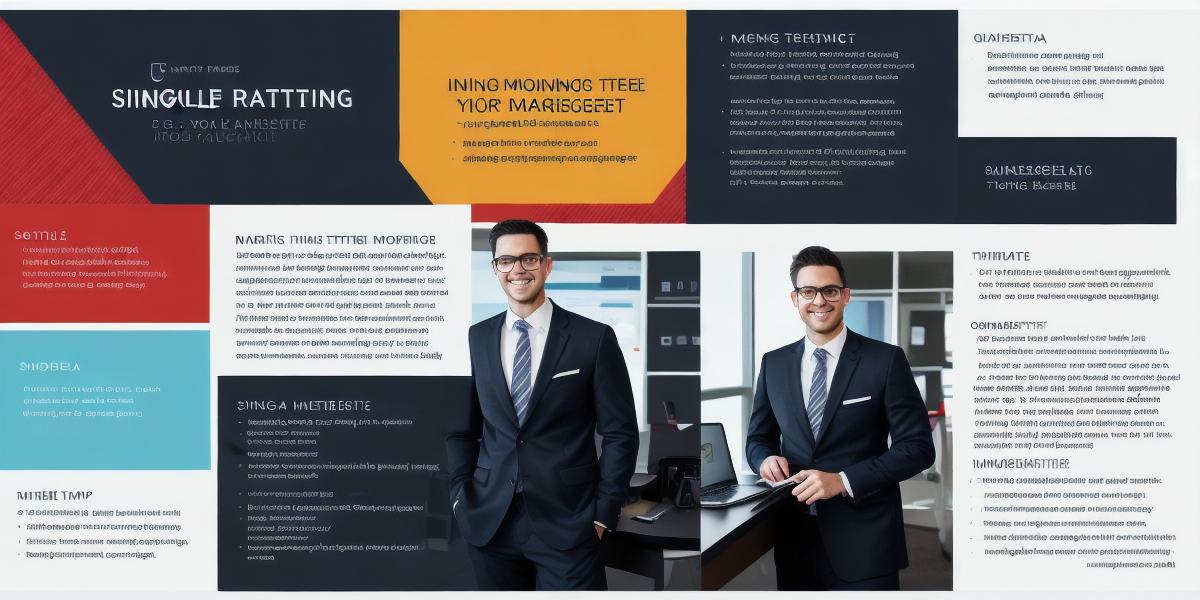Are you a nonprofit organization struggling to increase visibility and donations? You’re not alone. Many nonprofits face challenges when it comes to marketing themselves effectively and attracting the support they need. However, with the right tools and strategies in place, your nonprofit can reach new audiences and make a real impact in the world.
In this comprehensive guide, we will explore some of the best marketing tools for nonprofits, including social media, email marketing, content marketing, search engine optimization (SEO), and more. We’ll also share case studies and personal experiences to help illustrate how these tools have been used successfully by other organizations in the past.
Social Media: A Powerful Tool for Nonprofits
Social media is a powerful tool for nonprofits looking to increase visibility and connect with supporters. With billions of users around the world, social media platforms like Facebook, Twitter, Instagram, and LinkedIn provide an opportunity to reach new audiences and engage with existing supporters in meaningful ways.
Here are some tips for leveraging social media to boost your nonprofit’s visibility:
- Choose the right platforms: Not all social media platforms are created equal. Consider your target audience and the types of content you plan to share when choosing which platforms to use. For example, Instagram is great for visual content like photos and videos, while Twitter is ideal for short updates and news.
- Post engaging content: To keep your followers engaged, it’s important to post a variety of content that resonates with them. This could include educational posts, personal stories, fundraising appeals, and more.
- Use hashtags and tagging: Hashtags and tagging can help increase the visibility of your posts and connect you with other organizations in your industry. Be sure to use relevant hashtags when posting and tag other organizations and influencers to expand your reach.
- Monitor and respond to comments: Engaging with your followers is a crucial part of building relationships and increasing visibility. Take time each day to monitor comments on your pages and respond to any questions or concerns in a timely manner.
Email Marketing: A Proven Method for Nonprofits
Email marketing is another effective tool for nonprofits looking to reach supporters and boost donations. With permission-based email lists, nonprofits can deliver targeted messages directly to people who have shown an interest in their cause.
Here are some tips for using email marketing to your advantage:
- Build a strong email list: To be effective, you need a healthy email list of supporters who have given you permission to contact them. Consider hosting events or offering incentives to encourage people to sign up.
- Segment your list: Once you have a list in place, segment it based on factors like donation history and engagement levels. This will allow you to deliver more targeted messages that are more likely to resonate with each group.
- Craft compelling subject lines: The subject line is the first thing people see when they receive an email, so it’s important to make it count. Keep it short and to the point, and use language that clearly communicates what’s inside.
- Use personalization: Personalizing emails can help increase engagement rates and donations. Use the recipient’s name in the subject line and throughout the email, and mention their previous donations or interactions with your nonprofit.
Content Marketing: Building Trust and Credibility
Content marketing is a powerful way for nonprofits to establish themselves as experts in their field and build trust with supporters. By creating high-quality content that provides value and informs, nonprofits can attract new followers and donors while demonstrating their commitment to their cause.
Here are some tips for using content marketing effectively:
- Create a blog or YouTube channel: Having a dedicated platform for sharing content can help you build a following of people who are interested in your work. Consider starting a blog or YouTube channel to share educational content, personal stories, and more.
- Use storytelling: People respond well to stories, so consider using storytelling to bring attention to your cause and engage supporters. Share personal stories of individuals who have benefited from your work, or tell the story of how your nonprofit got started.
- Repurpose content: Don’t be afraid to repurpose content from other sources. This can help you save time and resources while still providing valuable information to your audience.
- Measure your results: Track your engagement rates and donations to see how your content is performing. Use tools like Google Analytics to see how many people are visiting your website or watching your videos, and use this data to improve your strategy over time.

Search Engine Optimization (SEO): Boosting Your Visibility in Search Results
If you’re looking to increase visibility beyond social media and email, SEO is a crucial tool for nonprofits. By optimizing your website for search engines like Google, you can attract more visitors who are interested in your work.
Here are some tips for using SEO effectively:
- Conduct keyword research: Identify the keywords that people use when searching for organizations like yours. Use these keywords throughout your website and content to help search engines understand what your site is about.
- Optimize title tags and meta descriptions: Your title tag and meta description are what appear in search engine results, so it’s important to make them count. Keep titles under 60 characters and meta descriptions under 160 characters, and use relevant keywords where appropriate.
- Improve website speed: Slow-loading websites can lead to high bounce rates and lower search engine rankings. Optimize your website’s images and videos to reduce load time and consider using a content delivery network (CDN) to improve performance.
- Create quality content: High-quality, relevant content is essential for SEO. Use keywords throughout your content, but don’t overdo it. Focus on providing value to your visitors and sharing information about your work that will help them understand why they should support your cause.
Case Studies: Success Stories from Nonprofits Like Yours
Here are some real-life examples of nonprofits that have successfully used marketing tools to boost visibility and donations:

- The American Cancer Society uses social media to share information about cancer research, fundraising events, and personal stories. They also use email marketing to keep their supporters informed about new developments in the fight against cancer.
- Greenpeace uses content marketing to raise awareness about environmental issues and inspire action. They have a blog and YouTube channel where they share educational content, news updates, and calls to action.
- The Red Cross uses social media and email marketing to raise funds for disaster relief efforts and promote blood donation events. They also use SEO to improve their visibility in search engine results.
FAQs: Common Questions About Marketing Tools for Nonprofits
Q: How much time should I spend on each marketing tool?
A: The amount of time you spend on each tool will depend on your organization’s goals and resources. However, it’s important to allocate time to all tools to ensure that you’re reaching a wide audience and engaging supporters effectively.
Q: Can I use multiple marketing tools at the same time?
A: Yes, it’s possible to use multiple marketing tools simultaneously. In fact, using a combination of tools can help you reach a wider audience and engage supporters in different ways. However, it’s important to prioritize your efforts and allocate resources effectively.
Q: Do I need to hire a professional to manage my marketing?
A: Whether or not you need to hire a professional will depend on your organization’s budget, expertise, and goals. If you have the time and resources to manage your own marketing efforts, you may be able to achieve great results without additional help. However, if you need more specialized support, hiring a professional can be a good investment.
In conclusion, there are many marketing tools available for nonprofits looking to boost visibility and donations. By using a combination of social media, email marketing, content marketing, and SEO, nonprofits can reach a wide audience and engage supporters in meaningful ways.




